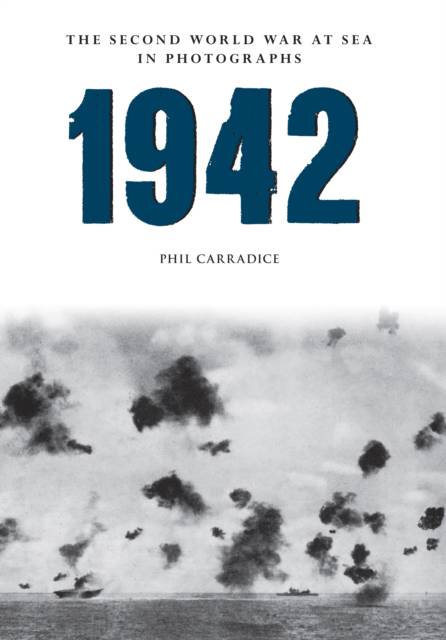
- Afhalen na 1 uur in een winkel met voorraad
- Gratis thuislevering in België vanaf € 30
- Ruim aanbod met 7 miljoen producten
- Afhalen na 1 uur in een winkel met voorraad
- Gratis thuislevering in België vanaf € 30
- Ruim aanbod met 7 miljoen producten
Zoeken
Omschrijving
As 1942, the fourth year of the war, began, victory for the Allies was still a long way off. German submarines were sinking ships off the coast of the United States in what would become known as the 'Second Happy Time' for the U-boat crews while Allied vessels were falling victim to Japanese aircraft and warships in the Far East. Scharnhorst, Gneisenau and Prinz Eugen made their dash through the Channel to German waters while in the Arctic the battleship Tirpitz and German aircraft and submarines menaced the convoys supplying Russia. However, convoys continued to get through to supply beleaguered Malta despite heavy losses to submarines and aircraft, and in the Pacific the US Navy inflicted defeats on the Japanese at the key battles of the Coral Sea and Midway, battles in which the major vessels never actually saw each other, fighting with carrier-borne aircraft instead. Troops were landed on the island of Guadalcanal and in North Africa. In this book, Phil Carradice uses many rarely seen images to tell the story of the Second World War at Sea in 1942.
Specificaties
Betrokkenen
- Auteur(s):
- Uitgeverij:
Inhoud
- Aantal bladzijden:
- 128
- Taal:
- Engels
- Reeks:
Eigenschappen
- Productcode (EAN):
- 9781445622491
- Verschijningsdatum:
- 28/12/2015
- Uitvoering:
- Paperback
- Formaat:
- Trade paperback (VS)
- Afmetingen:
- 163 mm x 231 mm
- Gewicht:
- 317 g

Alleen bij Standaard Boekhandel
+ 53 punten op je klantenkaart van Standaard Boekhandel
Beoordelingen
We publiceren alleen reviews die voldoen aan de voorwaarden voor reviews. Bekijk onze voorwaarden voor reviews.











